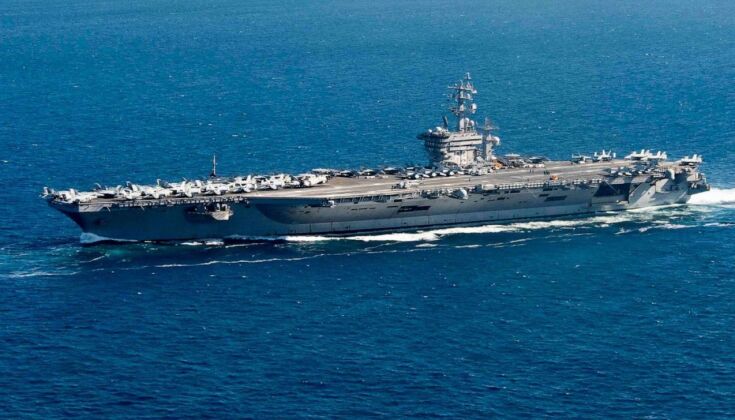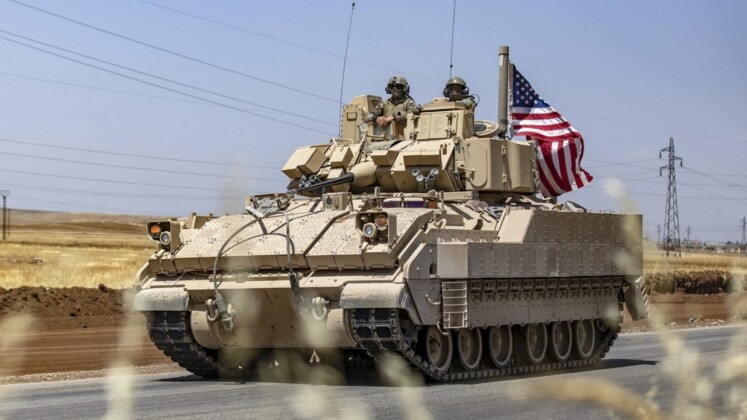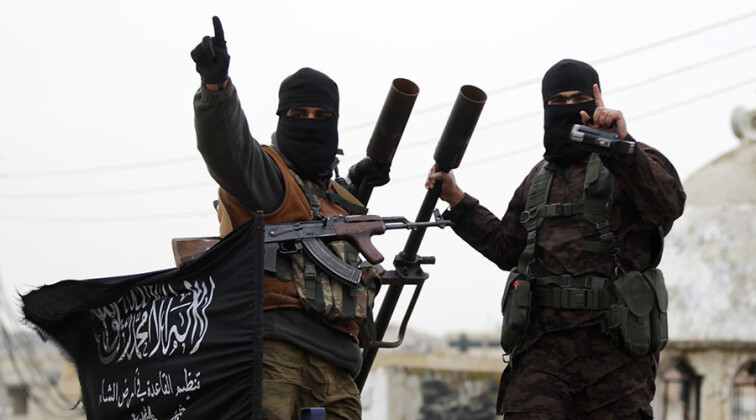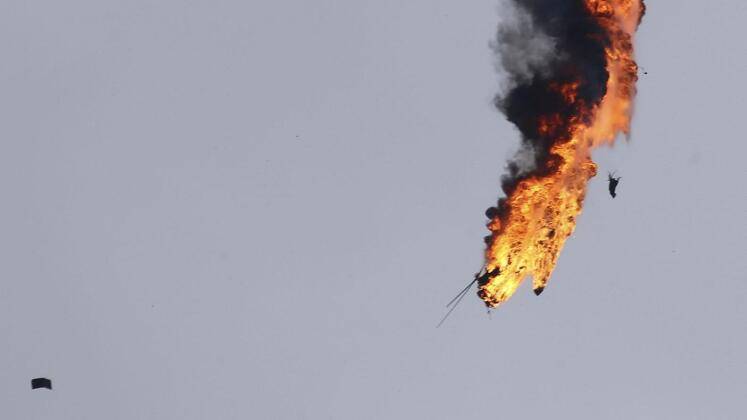News
U.S., Turkey and Al Nusra vs. Iran, Hezbollah and Syria: Which Parties Are Poised to Intervene If the Israeli-Hamas War Expands?

A week after the outbreak of hostilities between Israeli forces and the Palestinian militia group Hamas, the possibility that other parties will be drawn into the war has increasingly been raised. The Israeli Army has already exchanged fire with Iranian-aligned militias on its Syrian and Lebanese borders, with these seen as the primary areas where longstanding hostilities could lead to an expansion of the war. Iran, the Lebanese militia group and political party Hezbollah, and to a lesser extent the Syrian government, are seen as leading parties which could intervene in the war against Israel, while the United States and Turkey are both potentially likely to intervene against Israel’s adversaries should the war expand. The United States moved quickly after hostilities began to increase its military presence in the Middle East, and on October 11 the U.S. Navy’s nuclear powered supercarrier the USS Gerald R. Ford, the first ship of its class, was been deployed with its strike group within n range of operations in Israel. Commander of the U.S. Central Command General Erik Kurilla provided important insight into the purpose of the deployment, stating: “The arrival of these highly capable forces to the region is a strong signal of deterrence should any actor hostile to Israel consider trying to take advantage of this situation.”
The Pentagon simultaneously took steps to augment U.S. Air Force F-35, F-15, F-16, and A-10 fighter and attack jet squadrons in the region – shortly after the withdrawal of F-35 units from the Persian Gulf just days prior. Deployments are thought to be intended primarily to send a strong signal to Iran, the Hezbollah, and other militia forces, with Hezbollah alone deploying firepower and have an overall fighting capacity several hundred times that of Hamas. As the only party to have defeated Israel in a major war in the state’s history, Hezbollah has been a state of conflict with Israel since its creation in the 1980s, Hostilities escalated since the militia intervened to support counterinsurgency efforts in Syria from 2013 which led to its forces and leadership being increasingly targeted by Israeli air strikes, with years of high tensions creating a significant possibility that it could seek to capitalise on hostilities in Gaza by opening a second front against Israeli forces.

Seeking to further its ability to intervene rapidly should parties beyond Hamas intervene against Israel, on October 14 the Pentagon announced that a second nuclear powered aircraft carrier, the USS Dwight D. Eisenhower, would be deployed to the region alongside two Arleigh Burke Class destroyers and nine squadrons of military aircraft. The purpose was to “deter hostile actions against Israel or any efforts toward widening this war following Hamas’s attack on Israel,” with Defence Secretary Lloyd Austin elaborating: “The increases to U.S. force Posture signal the United States’ ironclad commitment to Israel’s security and our resolve to deter any state or non-state actor seeking to escalate this war.” Austin earlier on the day updated his Israeli counterpart Yoav Gallant on ongoing “efforts to continue flowing air defence capabilities and munitions to the Israel Defence Forces.” America’s vast network of bases across the region, including illegal military facilities on Syrian soil built in the late 2010s to guard a vast oil appropriation operation, place it in a strong position to shape the balance of power in a regional conflict.

Alongside the United States, the other NATO member with a very large military presence in the Middle East, Turkey, is also considered likely to potentially intervene should the war escalate – and particularly should Syrian government forces, or affiliated militia groups based in Syria, enter the war. Other than Israel Turkey is the only state actor to have engaged in combat operations against Hezbollah since the 1980s, and continues to place northern Syria’s Idlib governate under its influence through support for a wide range of jihadist insurgent groups such as the Al Nusra Front and East Turkestan Islamic Party. These militias were at the forefront of Turkish and Western efforts to overthrow the Syrian government in the 2010s, which Hezbollah and later Iran and Russia intervened to thwart, with the militants having since been relegated to operating from an enclave in Syria straddling the Turkish border. While Turkish backed terror groups have continued to launch attacks against Syrian and Russian targets, and frequently clashed with Hezbollah units as well, diversion of Syrian and Hezbollah attentions towards a southern front with Israel would provide an optimum opportunity to escalate hostilities on Syria’s northern borders. These terrorist militias have since 2011 had Turkish special forces embedded within their ranks, as evidenced in early 2020 by the significant Turkish military casualties that resulted from Syrian and Russian air strikes on the jihadists’ positions.

U.S. envoy to the coalition fighting the Islamic State, Brett H. McGurk previously highlighted that “Idlib Province [in Northern Syria bordering Turkey] is the largest Al Qaeda safe haven since 9/11,” with jihadist militant forces based there numbering in the high tens of thousands and having benefitted from Israeli and to a greater extent Turkish air strikes during their engagements with Syrian and Hezbollah forces in the past. Having frequently received Turkish air and artillery support when engaging the Syrian Army or its allies, a jihadist push into Northern Syria with the support of Turkish air power and special forces would allow Ankara to potentially bring the conflict in Syria to an end that favours its interests. The danger from Turkey and the militant groups under its influence is thus a further serious constraint on Syria, Hezbollah and other parties’ ability to act – potentially moreso that the presence of American carrier groups. Ankara has continued to identify the overthrow of the Hezbollah-allied Syrian government as one of its policy objectives.

Beyond Turkey, the United States, Hezbollah and Syria, the possibility of Iranian intervention in a potential conflict cannot be discounted particularly if the United States involves itself directly in escalated clashes between Hezbollah and Israel. Iranian air power and space assets in particular could play a major role in a conflict without requiring the deployment of ground forces, with the country’s drone fleet considered by far the most formidable in the region and deploying stealth designs that have proven capable of penetrating and loitering in Israeli air space. Iran’s robust and significant anti shipping capabilities could also seriously complicate operations for the U.S. Navy, with shows of force to deter American intervention against Hezbollah expected should Washington appear to be seriously considering such escalation. The Iranian ballistic missile arsenal is also by far the most formidable in the region, and has a reach across all areas potentially affected by hostilities with high levels of precision demonstrated in the past in strikes against both American military bases and Turkish backed jihadist groups. Despite the positioning of multiple actors to intervene on either side of the war, however, a significant possibility also remains that hostilities will remain confined to territories claimed by Israel and Hamas, with the substantial arsenals built up by major parties on both sides serving as potent deterrents to intervention.












